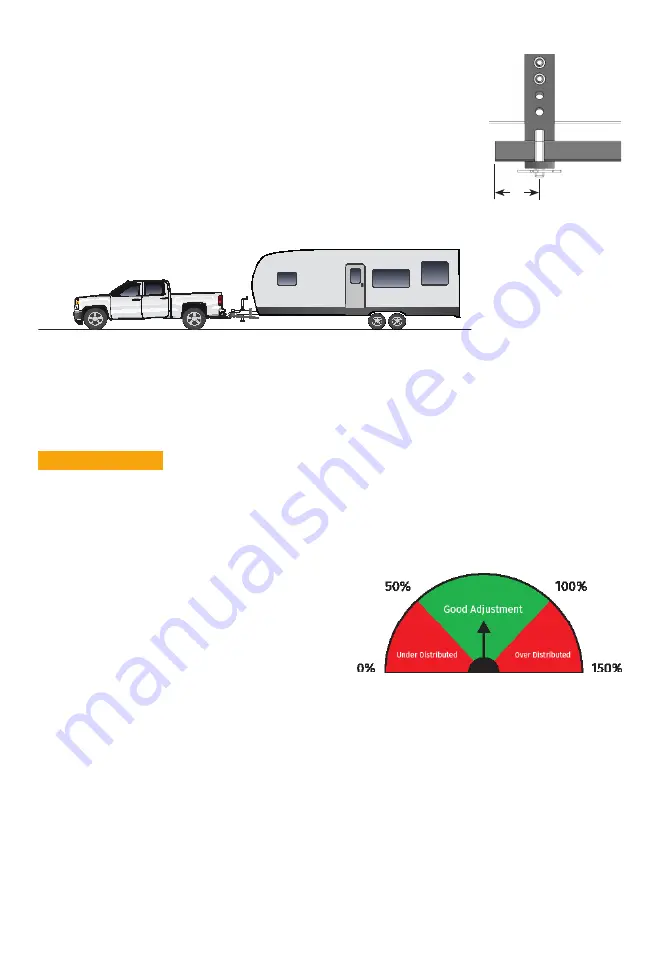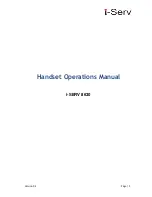
Retract the jack until the full weight of the trailer tongue is on the
hitch. Verify that there is a minimum of 3” from the end of the spring
arms to the center of the L-bracket. (Figure 24) If there is less than 3”
the brackets must be moved forward. Disconnect the hitch and move
the brackets forward.
With the trailer coupled and weight distribution engaged (spring arms
in place and jack retracted), measure from the ground to the bottom
of the tow vehicle driver side front wheel well. Record this distance on
line C
of the weight distribution calculation table. (Figure 25)
To calculate the weight distribution percentage- find the difference between B and C, then divide
by the difference between B and A, then multiply the result by 100.
Step 7 – Adjust Weight Distribution
Á
WARNING
Weight distribution is one of the many things that reduces sway. The
operator is responsible for making other necessary adjustments to all
contributing factors to minimize sway.
Good Weight Distribution Range
Good weight distribution adjustment is achieved
if your calculated weight distribution falls
between 50 — 100%. Every tow vehicle and
trailer combination will be different. Refer
to your tow vehicle owner’s manual for exact
ratings. Do not exceed 100% weight distribution.
(Figure 26)
Under or Over Distributed
Under Distributed means less than 50% weight distribution after installation (or less than the
minimum directed by the tow vehicle owner’s manual), measured at the front axle of the tow
vehicle. In this case, there is too much weight on the rear axle and not enough weight on the
front axle. This can cause a loss of steering and braking control with reduced resistance to
trailer sway.
To correct under distribution, add more spacer washers to the hitch head
or raise the L-brackets.
Over Distributed means more than 100% weight distribution return (or more than the
maximum directed by the tow vehicle owner’s manual), measured at the front axle of the tow
vehicle. Over-distribution can remove too much weight from the tow vehicle’s rear axle. This
can cause a loss of traction and control causing jack-knifing, especially in slick road conditions.
Figure 24
3”
Figure 25
Figure 26




































